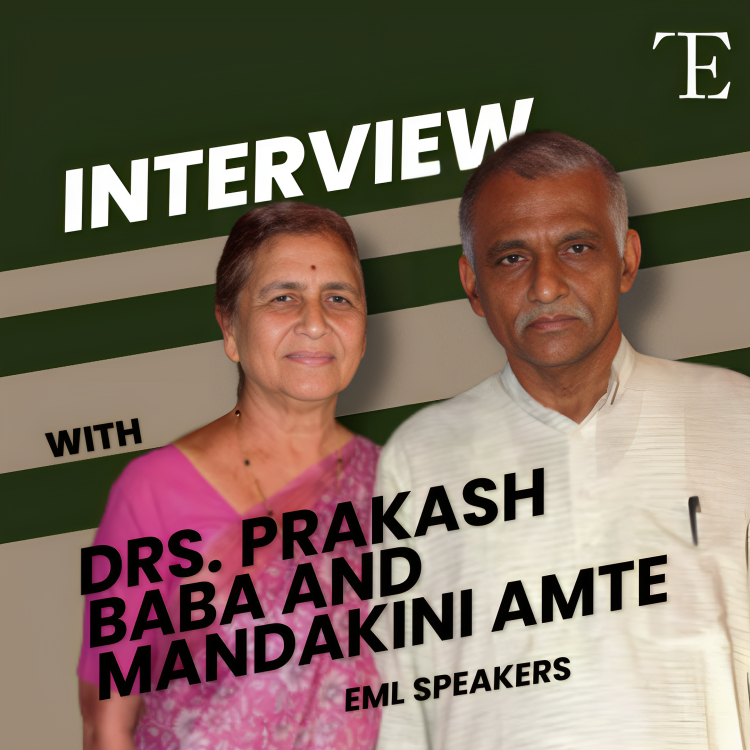Attention: If you are reading this article on a mobile phone, use Desktop View for best reading experience.
T5E’s Placement survey 2021-22 was conducted 28 December 2021 and 5 January 2022 to study the statistics of the Placement season of 2021-22. The survey witnessed a total of 326 responses across the entire graduating class (UG+PG). The respondents spanned across various degrees (albeit disproportional) and departments who appeared for the placement season. Close to 67% of the respondents were UG’s (B.Tech + DD) and the rest were PG’s (MSc+M.Tech+MBA+PhD+MS)
The survey focused on several aspects, such as Preparation, Opinion, Academics and Career, relevant to the placement statistics of respondents. The following charts showcase the general demographics of the survey across students of different degrees and branches.
Demographics
Note: Do glance through the above charts to understand the demographics of the respondents of this survey. These charts are key to explanations regarding the results we got for several questions, which depend heavily on one’s department/degree. PG students are underrepresented as compared to UG and there exist higher numbers of respondents among departments like ME, EE, CS.
This article delves into the Academics aspect of the placement season of 2021-22. It answers several questions on how academic qualifications affect the placement preparation, interviews and much more.
CGPA
The mean CGPA across all the respondents is 8.31/10. A distinction between UG and PG shows that average CGPA across UG respondents stands at 8.19/10, but the same for PG increases slightly to 8.52/10.
Around 32% of the respondents with high CGPA (>9) accepted a Core Engineering job offer during the placement season. This was followed by Data Science, Software, and Quant role offers. However, Data Science was the popular choice among the respondents with CGPA between 8.0 – 9.0. Consulting job offers increased slightly (by 5%) for this set of respondents, as compared to those with CGPA >9.
Majority of the respondents with CGPA>9 were placed in slot 1.1. Subsequently, slot 2.1 had close to 20% of the same set of respondents getting placed. A whooping 82% of the respondents with a high CGPA (>9) were placed by the end of Day 2 itself.
Across the respondents with CGPA in the range 8.0-9.0, maximum number of respondents (25%) were placed in slot 2.1. The number of such respondents placed in slot 1.1 was relatively less (around 20%). However, ¾ th of these respondents were still placed before Day-3.
The analysis for students with CGPA in the range 7.0-8.0 remains almost the same, with maximum respondents placed in slot 2.2. Close to 65% of the respondents were placed by the end of Day-2.
On relating CGPA and job CTC, it was observed that CTC doesn’t change significantly with increasing/decreasing CGPA. A mean CTC of 27.7 LPA was offered to respondents with CGPA >9. Students with CGPA range of 8.0-9.0 and 7.0-8.0 got placed with a mean CTC of 25.3 LPA and 21.5 LPA respectively. A slightly increasing trend of 3-4 LPA is seen for the mean CTC as the CGPA increases. However, CGPA only has a slight effect on the CTC as compared to the actual job profile as we see in the subsequent sections. The CTC of the job offer depends more on the profile/role applied than the CGPA.
IDDD/DD
Close to 30% of the respondents opted for IDDD/DD conversion. Among the respondents who converted to IDDD, Data Science (DS) was the most preferred subject, followed by Robotics.
Surprisingly, the mean CGPA across the IDDD/DD respondents (8.85/10) was much greater than the same for non dual degree students (8.05/10). This may be due to a high CGPA cutoff for IDDD programs and an extra year of study available for the dual degree students to work over their academic performance.
There seemed to be a significant correlation between IDDD/DD on the CTC offered for the job. The median CTC for non-dual degree students stood at 19 LPA, whereas the same for IDDD/DD students jumped to a whopping 28 LPA. The difference might be due to an added advantage of an interdisciplinary subject for IDDD students.
Among the different IDDD fields, Data Science had the highest number of students (75%) getting placed on Day-1, around 50% placed in slot 1.1 itself. Next came the Robotics field with 3 out of 4 students placed in slot 1.1. Moreover, all the respondents from IDDD DS were placed before slot 2.2.
As expected, close to 50% of the IDDD DS students opted for a Data Science profile during the placement season. There were a relatively lesser number of IDDD DS respondents opting for Consult, Finance, or Core profile.
Minors
Majority of the respondents did not opt for any minor courses during their UG. Across the respondents who opted for a minor, CS was the most popular choice, with around 33% opting for the same. This was followed by CH minor at 30%, and subsequently by BT, MA, and HS.
Software, Analytics/Data Science, Core Engineering, and Consulting were the top 4 job profiles accepted by most of the respondents (with and without minors).
When asked about the target profile, nearly a quarter of the respondents without minors preferred Core Engineering as their ideal profile, followed by 23% opting for Software development. The same analysis, for respondents with a minor, showed that a surprising majority prefer Software Development profile. Data Science was the second most preferred choice, followed by Core Engineering by a mere 18% of the respondents.
The above observations might indicate that students with minors degrees are less inclined towards a core profile as compared to other students.
Job Profiles
Software Development and Data Science are the most common job offers accepted by the respondents . As a whole, more than 75% of the respondents were placed in Software, Data science, Core engineering, and consulting profiles.
Across the respondents with Data science and Software Development job offers, close to 50% were placed on or before slot 2.1. Maximum number of these respondents were placed in slot 2.1 followed by 1.2 (14%).
Close to 32% of the respondents, with a high CGPA (>= 9), accepted a Core Engineering profile. Data Science and Software Development were the next most preferred job offers of this pool of respondents.
When compared across UG and PG respondents, it was observed that UG respondents received more number of Data Science and Software dev job offers whereas Core Engineering offers were slightly higher for PG respondents. Moreover, Research and Development (R&D) job profiles showed a sharp increase from 2.4% (across UG respondents) to 14% (across PG respondents). This might be due to the fact that PG students have a better and broader research background as compared to UG students.
More than half (54%) of the respondents from circuital branches (CS,EE,EP) received Software Development offers. Data Science role was accepted by a majority (around 30%) of the respondents from non-circuital branches, followed by core engineering. FMCG, Quant & Finance, Product Management profiles also showed a slight increase (around 2%) for respondents from non-circuital branches.
Target Profile
Unsurprisingly, the majority of respondents targeted Software Dev, Data Science, and Core Engineering job profiles for the placement season. Consulting and Quant & Finance were the second most preferred profiles.
UG respondents preferred Data Science and Software Development roles the most, followed by Core Engineering and Consulting. However, the top 3 preferred target profiles among PG students were Core, Software Development, and Research & Development. This shows a slight inclination of PG respondents towards a job in their field of research/study rather than a conventional coding profile.
Close to 70% of the respondents seemed to be satisfied with their current job offers. Most of the respondents receiving an offer in Data Science, Software Development, and Core profiles targeted the same and the respondents targeting Consulting, Quant, Product Management received an offer in the same set of profiles.
Number of Offers
As expected, close to 70% of the respondents received only 1 offer in the placement season. However, nearly a quarter received 2 or more job offers. Majority of the respondents receiving 2 or more job offers accepted a Software Development or Data Analytics position.
Job Offer CTC
The mean CTC across all the respondents is close to 24 LPA. Median CTC is nearly 19 LPA. However, these numbers vary substantially across different degrees. The numerical analysis for the same can be seen below –
B.Tech median CTC: 20 LPA
DD median CTC: 20 LPA
M.S CTC: 15 LPA
M.Tech CTC: 16.6LPA
Others: 19.6LPA
UG respondents had a slightly higher mean CTC of 26.6 LPA than a CTC of 21.4 LPA across PG respondents. This may be due to relatively high pay offered in Data Science and Software Development profiles as compared to others.
Across different departments, CS had the maximum mean CTC of 51 LPA followed by EE respondents, with mean CTC close to 30 LPA. Almost all other departments had a mean CTC in the range of 20.0-25.0 LPA. ME and CH departments had a slightly less value ranging around 19 LPA and 16 LPA respectively.
Software Development profiles had the highest mean CTC of 37.7 LPA. This was followed by Data Science roles, with CTC average close to 20 LPA. Consulting and Core profiles had a nearly equal mean CTC, slightly less than 20 LPA.
Though CGPA doesn’t have a significant correlation with CTC, there was a slight decrease in CGPA with CTC. Respondents with a CTC greater than 30 LPA had a mean CGPA of 8.53. However, the mean CGPA slightly reduces to 8.43 and then to 8.39 when CTC is in the range 25.0-30.0 LPA and 20.0-25.0 LPA respectively. Across the respondents with CTC less than 20 LPA, the mean CGPA was around 8.1
Placement Slots
A majority of the respondents (UG and PG) were placed in slot 2.1. Close to 21% of the respondents were placed in slot 1.1 and 17% in slot 1.2. Nearly ¾ th of the respondents were placed by the end of Day-2. Though a significant number of UG students received Day-1 offers, only a quarter of PG respondents were placed by the end of Day-1.
Most of the offers in slot 2.1 belonged to Data Science and Core profile followed by a few offers on Consulting . However, Day-1 offers were topped by Software Development roles.
Mean CGPA showed a decreasing trend post Day-1. On doing a slot-wise analysis, mean CGPA for slot 1.1 turned out to be 8.86, highest across all slots. Slot 1.2 and 2.1 had mean CGPA close to 8.5 and 8.3 respectively. Hence, it was observed that CGPA gradually decreased by 0.2-0.3 for subsequent slots during the placement season.
As expected, slot 1.1 had the highest median CTC of 30 LPA. The median CTC decreased slightly for subsequent slots and reached around 13 LPA by the end of Day-4. The slot-by-slot analysis can be seen below.
Conclusion
As a whole, the academics and placement details provided interesting insights about the placement season. Some of them are mentioned below:
- The CTC of a job offer depends more on the profile/role offered than the CGPA of the student.
- Dual Degree students received a mean CTC nearly 9 LPA higher than non-Dual Degree respondents. This may be due to an added advantage of an interdisciplinary subject for IDDD/DD students.
- PG respondents showed a significant inclination towards Research & Development (R&D) profiles than the UG respondents.
- Software development and Data Science were the most common job offers accepted by the respondents. Core and Consulting profiles were followed subsequently.
- CGPA showed a gradual decrease of around 0.2-0.3 for subsequent slots of the placement season post Day-1.
- All the IDDD DS respondents were placed before slot 2.2, around 3/4th placed by the end of Day-1 itself.
We received several generous tips by our anonymous respondents at several points in the survey. For the benefit of the student body, we have compiled them all here. We sincerely thank our respondents for their valuable insights from their placement journey.







